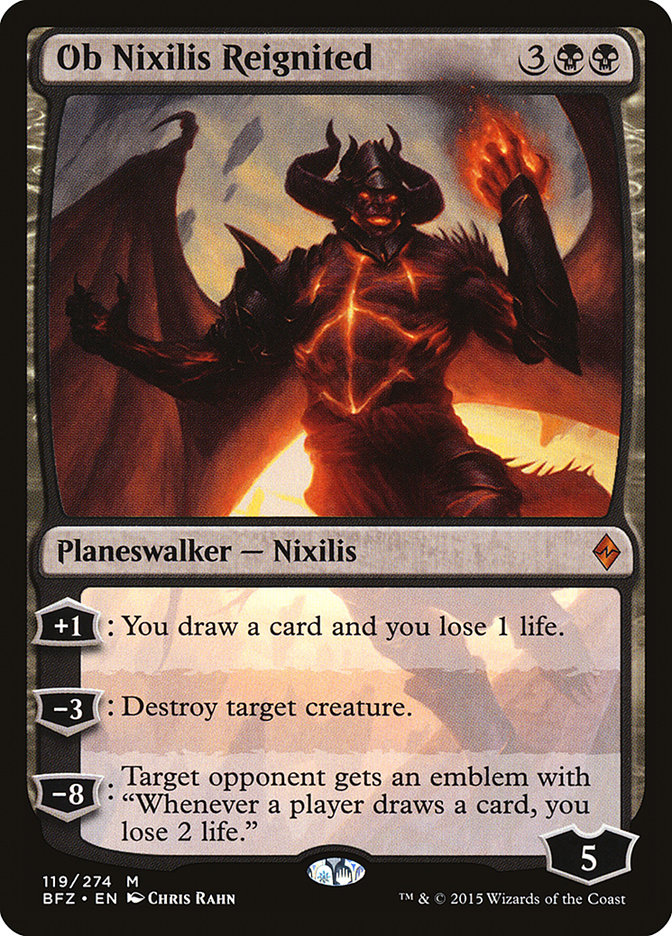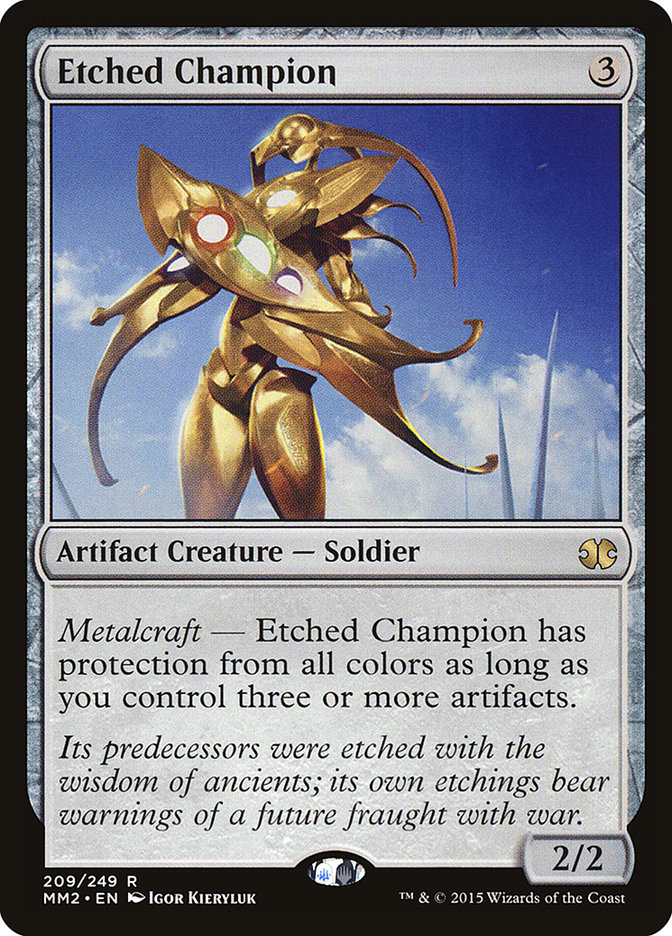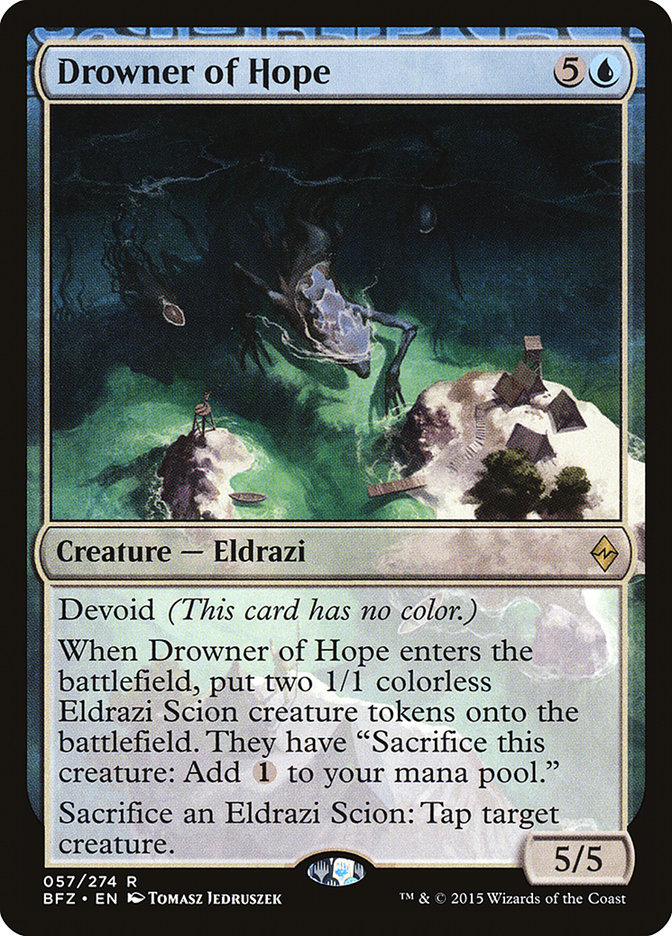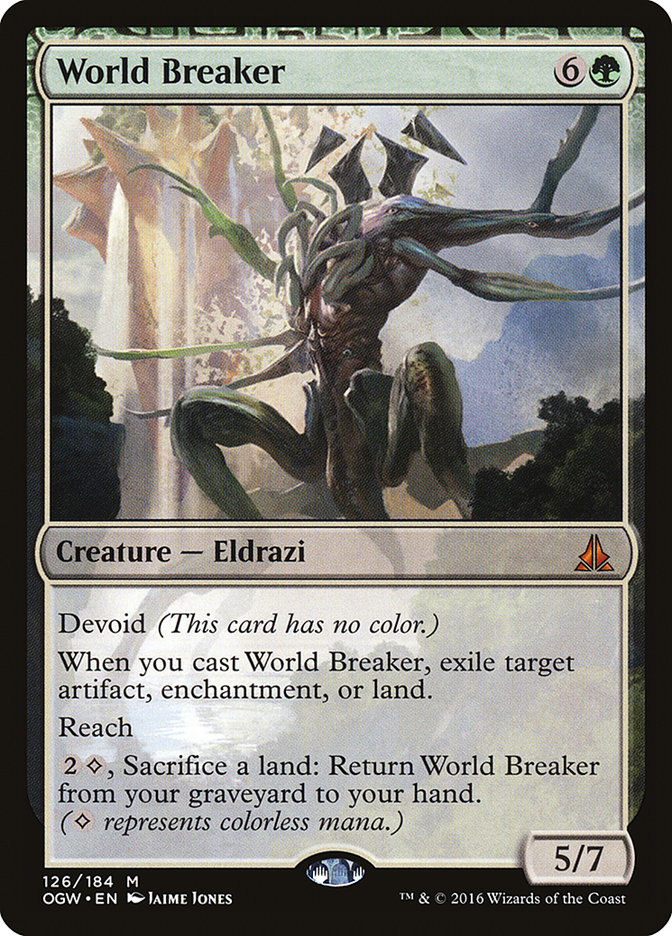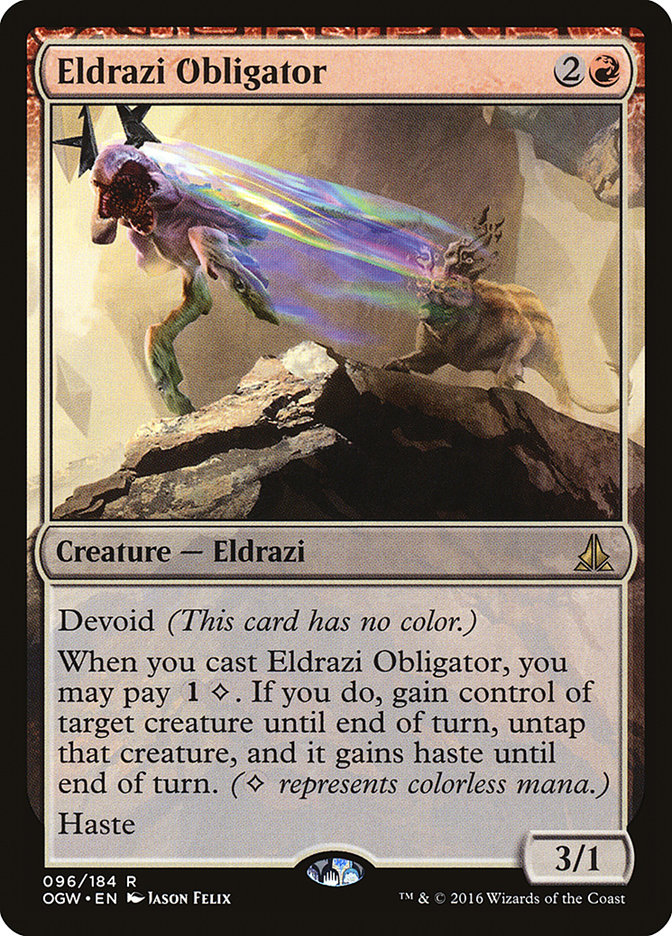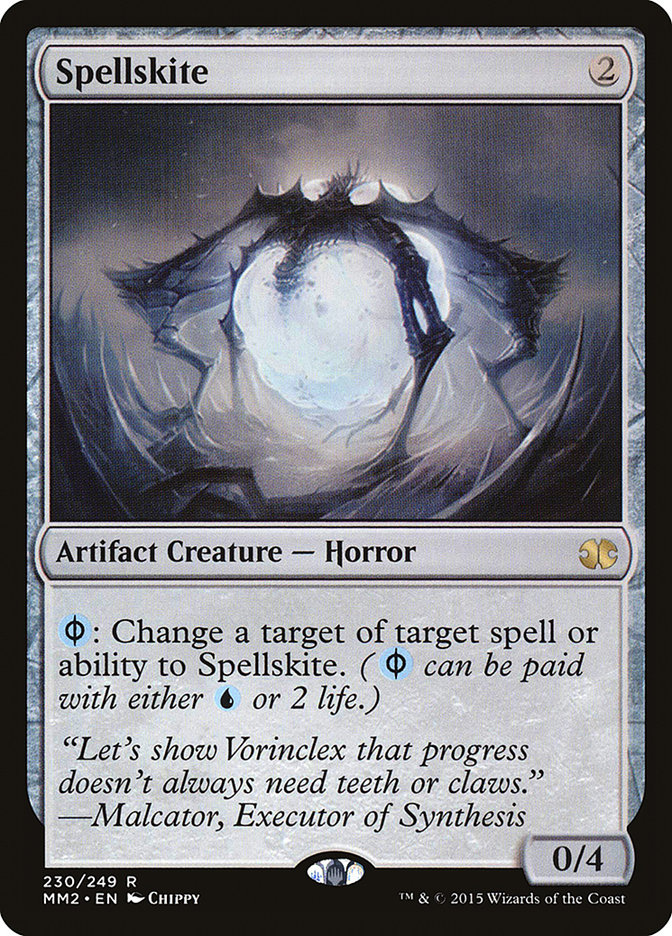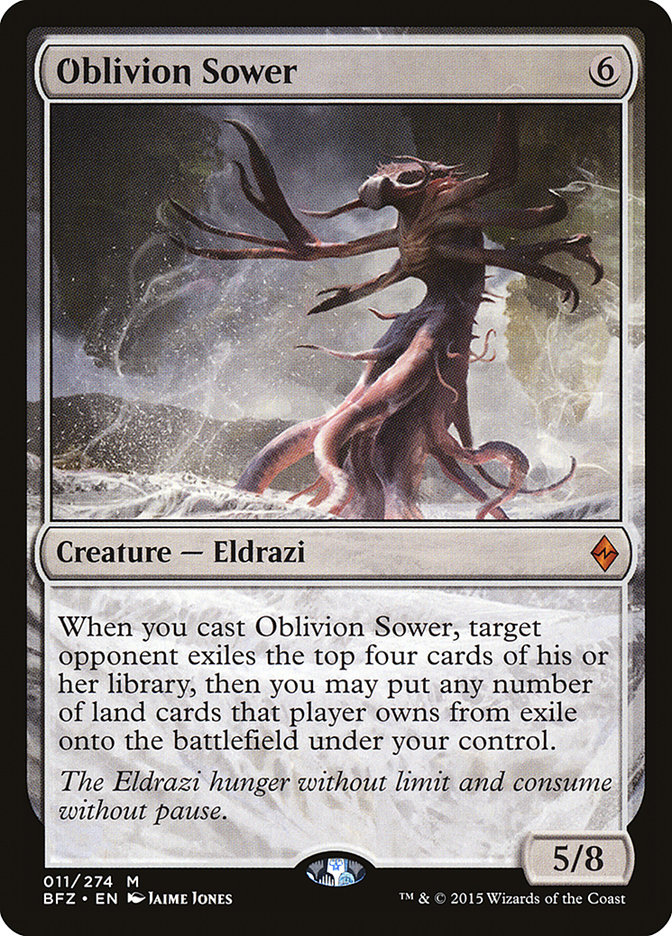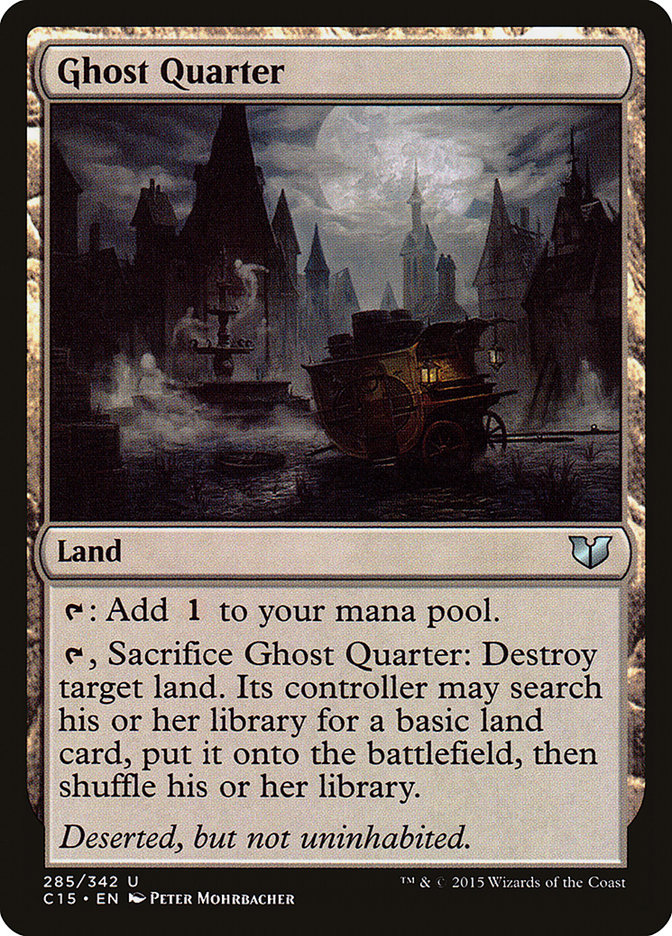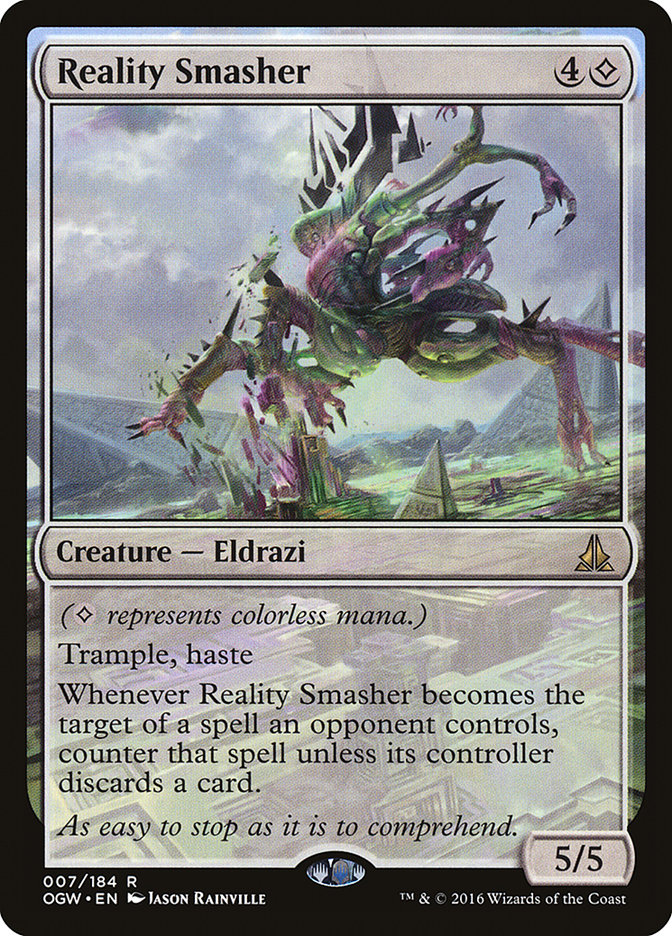Hi there.
My name is Frank Lepore.
You may remember me from such columns as Modern Monday or my Video Deck Tech series.
Now I’m here.
Today I’d like to tell you the story about how I found myself, a player of over twenty years, not just at Pro Tour Oath of the Gatewatch but among its Top 8. Those of you who have been privy to my previous articles might already know some of the details, but I promise there will be many more details to follow about the event itself, so be sure to stick around.
The Journey
I qualified for the Pro Tour for the first time in my extensive Magic history back in 2014. This may come as a shock to some of you who thought otherwise, but the truth is I simply never put the time or effort into really making a go of qualifying. In fact an overarching narrative of the Pro Tour this past weekend was how this was the first one I had ever played in. Few people believed this the first time I told them.
Unfortunately, though Melissa DeTora and I both made the Top 8 at Grand Prix Orlando in 2014, she soon after took a position at Wizards of the Coast in R&D. Due to Wizards of the Coast policy, the significant others of Wizards employees cannot participate in sanctioned Magic events with a prize pool of over $250. Needless to say, the Pro Tour fell under such a classification.
At the end of 2015, Melissa’s contract with Wizards ended and I was free to play in events again; so was she, so long as they didn’t take place within three weeks of the release of a set she had worked on. This excluded all Pro Tours for sets she worked on, but left the option for most Grand Prix that took place a little later.
As such, we flew out to Oakland for the Grand Prix in January and I ended up in exactly 64th place. Not bad for my first Premier-level sanctioned event in over a year. My invitation to the Pro Tour was also reinstated for Pro Tour Oath of the Gatewatch, and travel arrangements had been made!
The Perks of the Pro Tour
I like to think that this was sort of my weekend. There were signs all over. Aside from doing over twenty drafts in preparation for the event and having an extensive familiarity with the Modern format thanks to my previous Modern column, there were definitely some other things that gave me the impression that this was going to be a memorable weekend.
When I sat down for my first Pro Tour draft ever, I arrived at the very last table which had three other players seated at it.
“But don’t draft pods have eight players in them, Frank?” you might be asking me.
But of course they do! This final draft pod was only going to have six, however.
“But don’t six-player draft pods have six players in them, Frank?” you might be asking me.
Uh, well, yes. You see, two players were running late and had yet to show up. As such, all other draft pods began drafting while we waited for our missing competitors. Eventually they showed up, out of breath and nervous at the possibility of missing the first draft of the Pro Tour, and we began our delayed draft, but not before all eyes in the room were on our table, wondering what was going on.
The point of this story, however, is that I managed to open a foil Ob Nixilis Reignited, which also happened to be Pro Tour stamped (as all cards are when you draft at the Pro Tour). Seeing as the only card in the pack for me would have been a Cliffside Lookout, I was quite happy taking the monetary souvenir I was presented with.
I could definitely see this pick being frowned upon by certain players, but I’ll be honest: I wasn’t sure how well I was going to do seeing as this was my first Pro Tour, and my initial expectation going into the event was to simply try to make Day 2. If I could get a sweet bonus out of the event without really hindering my deck, it seemed fine to take such an opportunity.
The next day I found 2014-2015 Player of the Year Mike Sigrist trying to get a soda from a vending machine. For some reason the machine wasn’t working and there were two sodas backed up on the sliding channel that ejects the bottles. Eventually the drink Mike ordered pushed out the first stuck drink in the channel out into the dispenser. It wasn’t what he ordered, but he was fine taking a water.
“Victory!” we thought.
Then I watched Mike struggle to get the drink out of the vending machine. He was pulling in every direction, but geometry and physics simply didn’t work the way he wanted them to. Something was amiss but, without being vending machine experts, neither us had the foggiest idea what it was. Until we looked a little deeper. There was an entire large can of Monster Energy Drink underneath the water that had just fallen out! I lifted up the water bottle, pulled the Monster out safely, and down Mike’s water came.
“You can have that,” he said, offering me the free drink that someone purchased and left behind. It was at this point that I felt like the Gods (perhaps of Theros) were on my side this weekend. There seemed to be little hints of value coming at me from all sides. Who was I to argue?
The (Gut) Shot Heard Round the World
I had 6-0’ed the Draft portions of the Pro Tour thanks to the aforementioned testing I had done coming into the event, but despite a solid 4-1 Modern performance on Day 1, it felt like the wheels were starting to come off in Round 13. My Modern choice was starting to seem a little shaky as I faced down several other Eldrazi archetypes along with some more aggressive decks, like Affinity.
I knew I wanted to play Eldrazi coming into the event because they were cool, and powerful, and right up my wheelhouse, but the deck I eventually decided on was one I found on the Wednesday before the Pro Tour, played to a 5-0 finish in a Magic Online League by user Fastfake.
Creatures (29)
- 4 Blight Herder
- 4 Drowner of Hope
- 4 Wasteland Strangler
- 1 World Breaker
- 4 Eldrazi Mimic
- 4 Reality Smasher
- 4 Thought-Knot Seer
- 4 Matter Reshaper
Lands (25)
Spells (6)
Sideboard

Being out of the competitive scene for so long meant I didn’t really have a huge testing group. I basically just tested with some friends, local and otherwise, like Melissa DeTora, Case and Adam Kiyonaga, Ali Aintrazi, Jimmy Wong, Edward Chang, and Zac Elsik of Lantern Control fame. These were the people I tried various Eldrazi decks with and bounced numerous ideas off of.
The deck Team CFB/FtF had and the deck that Team EastWest Bowl had were completely unique creations that no one was really prepared for. Before that, I’m pretty sure everyone was assuming the Eldrazi would take a more mono-black form.
I recognized that Drowner of Hope was one of the best cards in the deck, as seven power for the mere cost of tapping about four lands is pretty good in any format. Along with Reality Smasher and Thought-Knot Seer, two of the most powerful cards in the deck, I was pretty sure I could handle most things that came my way. I’m pretty widely known for playing rogue decks, and I rarely play the most unfair decks in a given format. Fortunately, as I learned at this Pro Tour, going into the event the Eldrazi deck I chose was actually a bit of both.
Unfortunately, the midrange decks I was defeating handily the day before (Jund, Mardu, etc.) were no more. A lot of the more aggressive decks along with the other Eldrazi decks themselves could now be found in the same bracket as mine. I was King of the Hill for several rounds, but glory fades.
In my first “mirror match,” I faced off against Andrew Brown and his Team EastWest Bowl U/R Eldrazi list in Round 13. This would be my second loss in the event, as their deck was simply much better-positioned against the mirror. Having access to Eldrazi Obligator was just brutal as it’s incredibly difficult to play around, especially when you don’t know about it. Eventually he stole my World Breaker to finish our match.
The real gem of the event was in Round 14, however. This was the feature match everyone was clamoring for, Frank Lepore vs. Luis Scott-Vargas. The first two games played out in typical Eldrazi fashion: one guy stumbled while the other dropped undercosted haymakers. They were short and sweet. But that third game…that was something else. It has been pretty heavily talked about since it happened. Luis managed to get me to one life, but then I managed to stabilize. The battlefield was completely stalled with tokens and Oblivion Sowers (a card which was also just brutal against me).
The problematic card for me in this matchup, which came as a complete surprise, was Spellskite.
You would think such an innocuous little card wouldn’t be a big deal to a deck that contains zero spells that target anything. The problem lay in the card’s ability to redirect my Drowner of Hope activations. Suddenly a stalled battlefield that I could usually trump by tapping all of my opponent’s things was a real roadblock.
I eventually drew my one-of World Breaker to try and get rid of Luis’s Eye of Ugin. If only one of us had an Eye this late in the game, it could easily spell victory. Luis redirected it to the Spellskite, which I was actually fine with. This meant that if I drew a Drowner of Hope, I could most likely win, since I would have five Eldrazi Scion tokens. It also meant that if I didn’t draw a Drowner of Hope, I could search one up with my own Eye of Ugin.
Alas, it was not meant to be. Luis drew an incredibly timely Oblivion Sower that grabbed a good deal of my exiled lands, including two Ghost Quarters. Now he was the one in command and he had the ability to shut off my Eye of Ugin, which he promptly did. The game was still somewhat stalled though. Ghost Quarter or not, he still didn’t have a way to punch through any damage.
Turns out he didn’t need it. His next timely draw was a Gut Shot. After struggling to survive for turns at a mere one life, the dream of Top 8 was on life support thanks to a shot to the gut. Check out the epic match in its entirety:
Good Guy Pascal Maynard
My hopes were dwindling by Round 15. I sat down against Pascal Maynard, who I knew was on Affinity, and had little hope of defeating him. The games played out as you might expect when the Affinity player gets a Cranial Plating each game against their midrange opponent, but that wasn’t really what stuck out to me.
In one of our games I accidentally took a peek at the second card from the top of my deck when I was drawing my card for the turn. I immediately mentioned something and called for a judge. As the judge was on his way over, I took the top two cards from the top of the deck and placed them in front of the deck, as to make it easier to tell the exact cards that were affected. I thought I would be helping.
The judge came over and immediately ruled it as looking at extra cards, which should be a warning. Once I told him that I removed the cards from the top to help out and make them distinct, we were dealing with an entirely different issue. I forgot the exact infraction, but the penalty would have been a game loss
The issue was that no one could be certain that I didn’t adjust the two cards that were removed in any way. Who was to say that the second card that I saw was not now on the top? (Well, I could, but that didn’t really count.) That was now the biggest issue: while I didn’t move the cards in any way, shape, or form, the potential for me to have done so was there.
Throughout this entire process, Pascal was right there in my corner, imploring the judge not to give me a game loss and insisting that the only reason I moved them was for the sake of clarity. This was incredibly refreshing, especially considering it was looking like I was going to win this game. Due to some confusion and a pretty complex situation, the table judge took Level 5 judge Riccardo Tessitori aside and they had a discussion.
Eventually the table judge returned and ruled that it was a Hidden Card Error. This meant that Pascal would be able to look at the top two cards that I had moved, select one, and that card would be shuffled back into the deck. Considering I was just threatened with a potential game loss, this was a perfectly reasonable solution in my eyes, even though I knew I hadn’t been adjusting the cards at all. The rub, however, was what the two cards were discovered to be when flipped over…
It was comical to us that the largest issue was whether I had rearranged the two cards, when they were, in fact, the same card all along. This also made Pascal’s choice as to which card to shuffle away completely meaningless. In the end it felt like a pretty big deal over nothing based on what the two cards actually were, but the thing that did stand out to me was that, in a bubble match for Top 8 at the Pro Tour, Pascal still didn’t advocate for me getting a game loss. And that kind of thing sticks with you.
What Does This Mean for Modern?
Everyone is pretty up in arms right now about what Eldrazi Temple and Eye of Ugin mean for the format (#8AncientTombs). Honestly, it’s somewhat silly. What you want to remember is that this is the Eldrazi’s coming out party. There had never been a full-scale Modern event with Reality Smasher and Thought-Knot Seer and Drowner of Hope before. This was the first one! No one (or very few) went into this Pro Tour and thought, “I know what the Eldrazi deck is going to look like and how well-represented it will be, so I’d better prepare for it.” No one knew!
Even if you prepared for my version of the deck, preparing for the U/R version of the deck would require a completely different process; they’ve practically different decks. The best teams ended up putting in the time and effort to “break the format,” so to speak, and that’s exactly what you want to happen at big events like this. That is not, however, an indication of the health of a format.
One thing I want people to remember is that the Eldrazi deck is basically a creature deck. Reality Smasher is just a creature. Thought-Knot Seer is just a creature. They all die to removal (though not as easily as some do), and preventing them from either attacking or being cast in the first place could be very big game.
As someone who played eleven rounds with the deck at the Pro Tour, I can tell you for a fact that the deck is not nearly as consistent as everyone may think. Sometimes you draw nothing but non-Ancient Tomb lands and you’re playing an incredibly fair game. What happens when an opponent plays an Ensnaring Bridge? Or a Ghostly Prison? Or a Blood Moon? How does the deck beat Lantern Control? Or something like Soul Sisters, even? The best thing about Modern was that you could literally play anything, and that’s still very true. People just don’t want to see that, because they like the idea of rubbing a perceived failing (the banning of Splinter Twin) in Wizards of the Coast’s face.
Let’s get over that. It’s petty, and it doesn’t actually help us solve Modern (as if such a thing were even possible). As soon as we start playing things that attack the Eldrazi manabases, like Blood Moon or lots of Fulminator Mages, or their way to attack, the metagame will once again shift away from Eldrazi decks. Let’s keep our collective heads about things and enjoy the fact the Modern is still very, very open despite the appearance otherwise from one, single event.
If you guys would like to see more from me, be sure to let me know. Thanks for reading my first article on SCG and for all of the immeasurable support this past weekend. It meant the world. Now that I’ve set the bar though, I suppose I’ll have to do a little better at Pro Tour Shadows over Innistrad. In the meantime, I hope to see you at Grand Prix Detroit!


